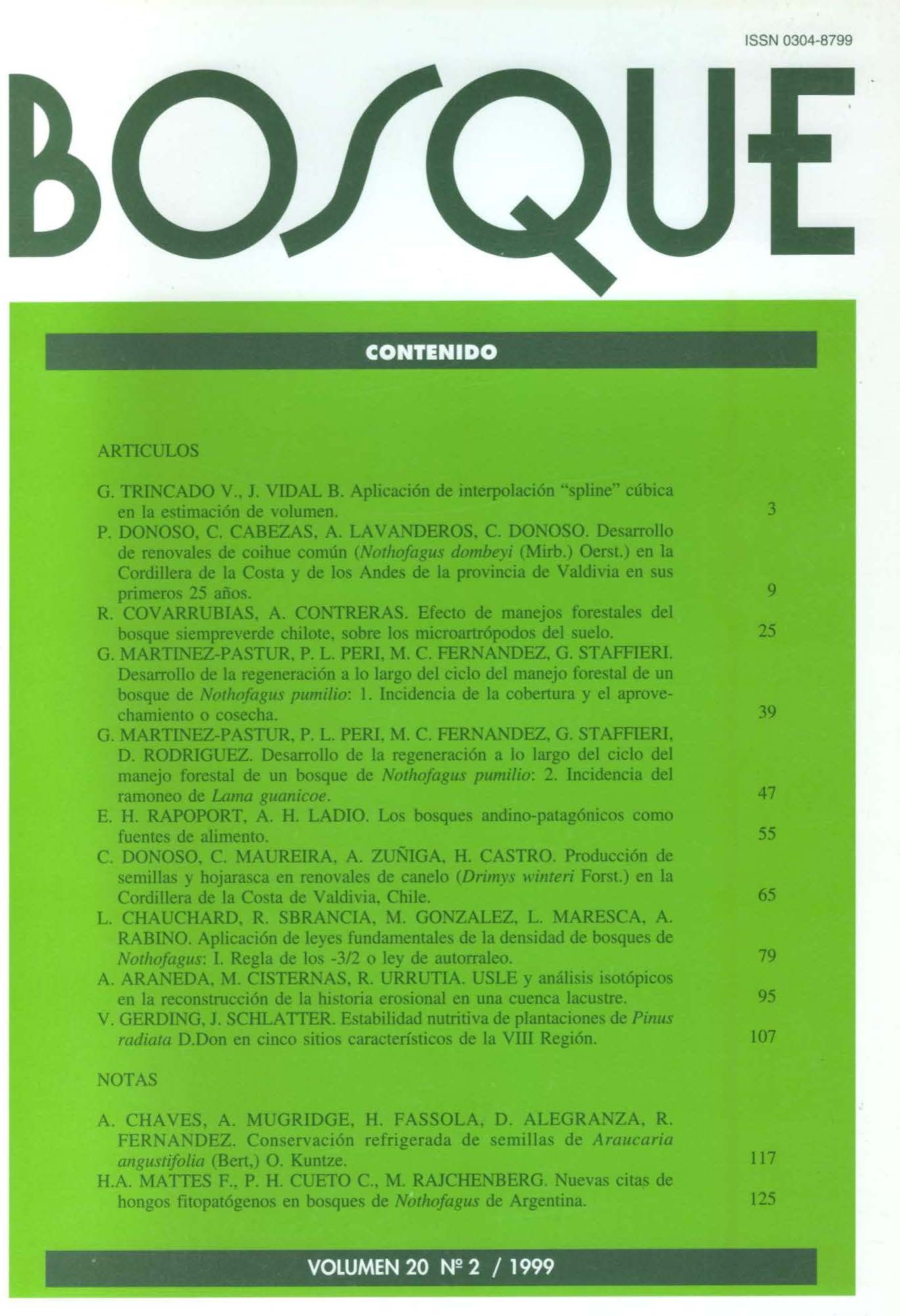Effect of some forest management types to evergreen forests of Chiloe (Chile) on soil microarthropods
Main Article Content
Abstract
Microarthropods from 20 soil samples groups were extracted, counted and classified to supra-specific levels. A first sample group came from a native Chiloe -evergreen forest and the other groups came from three treated plots of the same type of forest, so they could be contrasted with the former. The treatments of the plots were three different forest management, namely clear-cutting in the form of a band (15 m x 30 m) or circles of 25 or 15 m diameter. Also, the weight of water content and dry weight of all samples were recorded. For each of the four sample groups, data of their dry weight (average and standard deviation) and amount of water (% of dry weight) are given; the latter figures show a high retention capacity, as values between 516% and 640% were found. Faunal results show a lowering of the number of taxa richness, of their diversity index (H') and of their evenness (Pielou's J index) in all three treatments. Although 30 taxa were found, only Oribatida, Uropodina and Gamasina mites showed sample frequencies higher than 85%. Correspondent to this, the same three groups presented the highest abundance. These three taxa and also the total mite and total faunal densities were taken for the comparison of their respective sample means (X), through analyses of variance. Abundance of four of these five groups were significantly lower in the sample group from circular clear-cuttings (25 m). Otherwise, no significant differences were found between the control and the other two treatments for any of these taxa.

